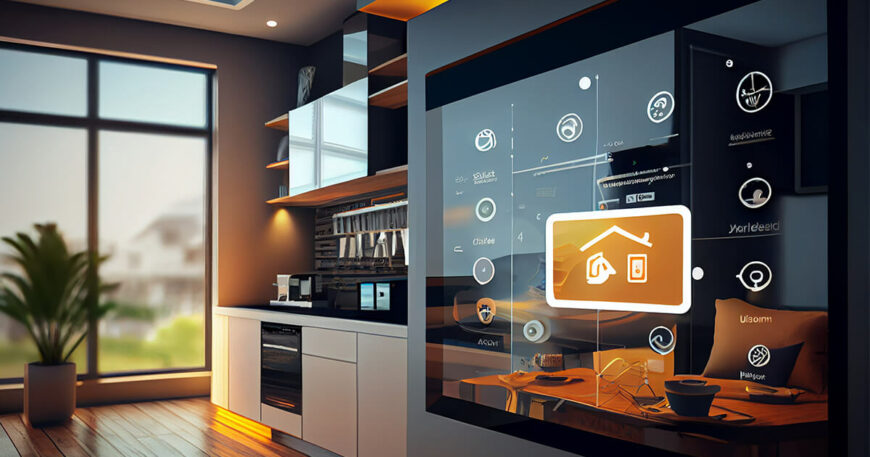In recent years, smart home technology has taken the world by storm, transforming the way we interact with our living spaces. From enhancing security to increasing convenience and energy efficiency, smart homes offer a range of benefits that make everyday life easier and more enjoyable. If you’re considering upgrading your home with smart technology, this ultimate guide will help you understand the key components and how to get started.
1. Understanding Smart Home Technology
Smart home technology refers to devices and systems that connect to the internet and can be controlled remotely via a smartphone, tablet, or voice command. These devices often communicate with each other, creating a seamless and integrated home environment.
- Internet of Things (IoT): The backbone of smart homes, IoT involves a network of interconnected devices that collect and share data.
- Home Automation: This involves using smart devices to automate everyday tasks, such as turning on lights, adjusting thermostats, and managing security systems.
2. Key Components of a Smart Home
To build a smart home, you’ll need to invest in a variety of devices and systems that cater to your specific needs. Here are some essential components to consider:
a. Smart Lighting
Smart lighting systems allow you to control the brightness, color, and scheduling of your lights through a mobile app or voice assistant.
- Energy Efficiency: Automated lighting can reduce energy consumption by turning off lights when not in use.
- Convenience: Set schedules or use motion sensors to automate lighting based on your daily routine.
b. Smart Thermostats
Smart thermostats learn your preferences and adjust the temperature accordingly, providing optimal comfort and energy savings.
- Remote Control: Adjust your home’s temperature from anywhere using your smartphone.
- Energy Reports: Monitor and analyze your energy usage to identify opportunities for savings.
c. Smart Security Systems
Enhance your home’s security with smart cameras, doorbells, locks, and alarms that provide real-time alerts and remote access.
- Surveillance: Keep an eye on your property with high-definition cameras and live streaming.
- Smart Locks: Control access to your home with digital keys and remote locking/unlocking.
d. Smart Appliances
Upgrade your kitchen and laundry room with smart appliances that offer remote control and monitoring capabilities.
- Smart Refrigerators: Keep track of groceries, create shopping lists, and receive expiration notifications.
- Smart Washers and Dryers: Start, stop, and monitor laundry cycles from your mobile device.
e. Smart Entertainment Systems
Create a seamless entertainment experience with smart TVs, speakers, and streaming devices.
- Voice Control: Use voice assistants like Amazon Alexa or Google Assistant to control your entertainment system.
- Multi-Room Audio: Stream music throughout your home with interconnected smart speakers.
3. Choosing a Smart Home Hub
A smart home hub acts as the central point of control for all your smart devices, allowing them to communicate with each other and be managed from a single interface.
- Compatibility: Ensure the hub you choose is compatible with your existing and future smart devices.
- Popular Hubs: Some popular options include Amazon Echo, Google Nest Hub, and Samsung SmartThings.
4. Integrating Voice Assistants
Voice assistants like Amazon Alexa, Google Assistant, and Apple Siri can control many smart home devices through simple voice commands, making your home more interactive and convenient.
- Voice Commands: Use voice commands to control lights, thermostats, security systems, and more.
- Integration: Choose smart devices that are compatible with your preferred voice assistant for seamless integration.
5. Ensuring Security and Privacy
With the increased connectivity of smart homes, it’s essential to prioritize security and privacy to protect your personal data.
- Secure Network: Use a strong, unique password for your Wi-Fi network and enable encryption.
- Regular Updates: Keep your smart devices and apps updated to protect against vulnerabilities.
- Data Privacy: Be aware of the data your devices collect and how it’s used, and adjust privacy settings accordingly.
6. Getting Started with Your Smart Home
Transforming your living space into a smart home doesn’t have to be overwhelming. Start small and gradually build your system based on your needs and budget.
- Plan Your Setup: Identify the areas of your home that would benefit most from smart technology.
- Set a Budget: Determine your budget and prioritize essential devices that will provide the most value.
- Research Products: Read reviews and compare features to find the best smart devices for your needs.
- Professional Installation: For complex systems, consider hiring a professional to ensure proper installation and integration.
Conclusion
Transforming your living space into a smart home offers numerous benefits, from increased convenience and energy savings to enhanced security and entertainment. By understanding the key components and following a step-by-step approach, you can create a smart home that meets your unique needs and lifestyle. At SkyNet Technologies in Kampala, Uganda, we specialize in helping homeowners integrate smart technology seamlessly into their living spaces. Contact us today to learn how we can help you create the ultimate smart home experience.





